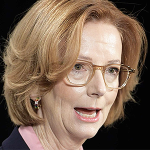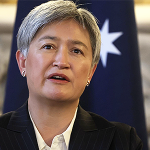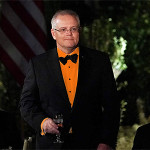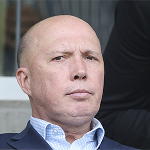It is doubtful that Ebrahim Raisi, the ‘butcher of Tehran’, would have experienced a moral epiphany had he been shown in life the reaction that his demise would evoke from his own people. So it goes with fanatics, especially one who presided over the murder of thousands of political opponents by bundling them into forklift trucks and hanging them from cranes. Nevertheless, the jubilation affirms – as if it was needed – that the Iranian people have no truck with the Iranian regime.
His death leaves an opening in the competition for power
Let’s set aside the fact that the EU responded to the crash by offering its Copernicus rapid response emergency mapping service – going out of its way to save the life of the man dedicated to their own destruction – and what this says about the almost comical attitude of confusion and appeasement with which our western leadership is currently benighted. The bare fact is that elated Iranians are unlikely to be rewarded with any change in the draconian policies and insidious global threats presented by the regime.
It is true, as former Israeli intelligence chief Major General Tamir Hayman pointed out yesterday, that it would be ‘hard to find an Iranian president worse than Raisi’. In reality, however, the office of Iranian president is primarily an administrative one, with the true power being wielded by the supreme leader, Ayatollah Khomenei. Indeed, the elderly tyrant himself was behind Raisi’s election victory, disqualifying any candidates who might have stood a serious chance of challenging him.
Yet this indicates the true significance of Raisi’s demise. The butcher of Tehran was one of the leading candidates to replace the ailing supreme leader, who last month celebrated his 85th birthday (making him four years older even than US president Joe Biden). Raisi’s death, therefore, has its deepest implications on the succession struggle for absolute power, which is about to intensify.
The Iranian regime is characterised by its factionalism, with various groups continually vying for supremacy over their ideological cousins. At the most fanatical end of the spectrum are the devotees of the Anjoman-e Hojjatieh cult, founded in the 1950s in violent opposition to the Bahai religion, which it viewed as apostasy. These ideologues centred their world view around a craving for the return of a Messianic figure called the Mahdi, who is prophesied to emerge following an apocalyptic war (sparked, they believe, by conflict with Israel).
Although the Hojjatieh group was disbanded in the 1980s, its ideology became the tacit core of subsequent fanatical groups, such as the powerful Front of Islamic Revolution Stability, a group of younger ideologues and Ahmadinejad loyalists for whom the older Hojjatieh figures are unspoken mentors and role models. They have reproduced the same ideology in a different disguise.
Overall, the hardliners coalesce around a deeply disturbing foreign policy strategy: to achieve an apocalyptic war via overseas militia, ballistic missiles and nuclear weapons. It is no exaggeration to say that these people are among the gravest threats to global stability today.
Though not aligned with these ideological factions himself, Raisi was viewed by these gangs of demagogues as the most practical and safest candidate for the role of Supreme Leader. In addition to his blood-soaked curriculum vitae, his father-in-law is the powerful Friday Imam of Mashhad, winning him considerable support among high-profile clerics.
Other hard-right factions, such as supporters of Mohammad Bagher Ghalibaf, the speaker of Iran’s parliament and a former chief of police, have opposed Raisi on the basis of competing interests with a sprinkling of ideological differences. They will also greet news of his death with jubilation, but of a more sinister tone.
His death leaves an opening in the competition for power. Given the current geopolitical tensions, there are fears that an even darker candidate will take his place.








